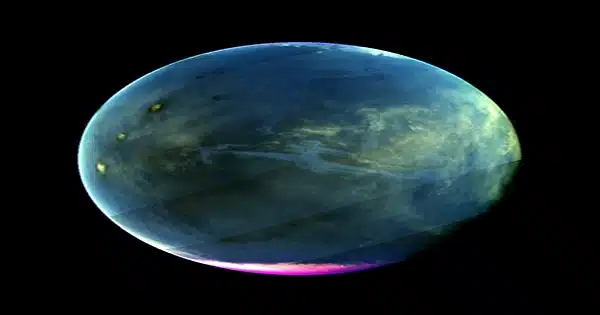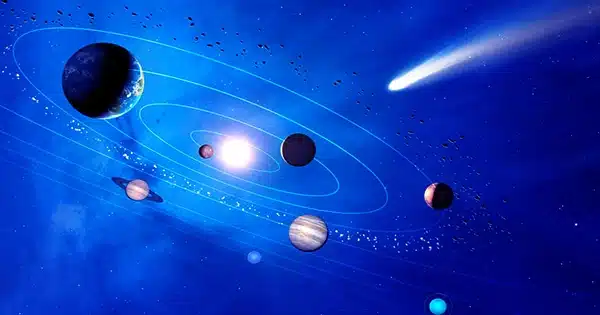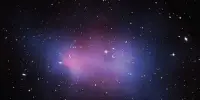Astrophysicists at the University of Central Lancashire (UCLan) discovered that planets had flattened forms like smarties shortly after formation, rather than being spherical as previously thought.
The study, accepted for publication in Astronomy & Astrophysics Letters, demonstrates that protoplanets, which are very young planets that formed recently orbiting stars, are flattened forms known as oblate spheroids. The paper can presently be found on the arXiv preprint server.
The team from UCLan’s Jeremiah Horrocks Institute for Mathematics, Physics, and Astronomy used computer simulations to model planet formation using the disk-instability theory, which states that protoplanets form in short timescales by breaking up large rotating disks of dense gas orbiting young stars.

Using this method, the scientists calculated planet parameters, compared them to data, and investigated the creation mechanism of gas giant planets. They concentrated on studying the forms of nascent planets and how they might expand into huge gas giant planets even larger than Jupiter. They also investigated the attributes of planets developing under various physical conditions, including ambient temperature and gas density.
Dr. Adam Fenton, a newly graduated student, oversaw the research. He stated, “Many exoplanets, or planets that orbit stars in different solar systems than our own, have been discovered in the previous three decades. Despite viewing thousands of them, how they form remains unknown.
“They are thought to form either through ‘core accretion,’ which is the gradual growth of dust particles that stick together to form progressively larger and larger objects on long timescales, or directly by the breaking up of large rotating protostellar disks around young stars in short timescales, which is what we call the theory of disk-instability.
“This idea is interesting because big planets can develop fast at great distances from their host star, which explains several exoplanet discoveries.
“It was an extraordinarily demanding computing endeavor that took half a million CPU hours on the UK’s DiRAC High-Performance Computing Facility. But the results were incredible and well worth the effort.”
Dr. Dimitris Stamatellos, Reader in Astrophysics at UCLan and co-investigator, stated, “We’ve been studying planet formation for a long time, but we’d never considered checking the shape of the planets as they form in the simulations. We’d always imagined they were round.
“We were very surprised that they turned out to be oblate spheroids, pretty similar to smarties.”
Observational confirmation of the flattened shape of young planets could solve the key question of how planets originate, pointing to the currently less popular disk-instability model rather than the mainstream planet formation theory of core accretion.
The researchers also observed that new planets form as material falls upon them, primarily from the poles rather than the equators.
These findings have crucial implications for young planet investigations since they suggest that the appearance of planets through a telescope varies with viewing angle. Such observations of young planets are critical to understanding the planet formation mechanism.
The researchers are building on this discovery with enhanced computational models to investigate how the shape of these planets is influenced by the environment in which they form, as well as to identify their chemical composition for comparison with future discoveries from the James Webb Space Telescope (JWST).
Observations of young planets have been possible in recent years thanks to facilities such as the Atacama Large Millimeter Array (ALMA) and the Very Large Telescope.















